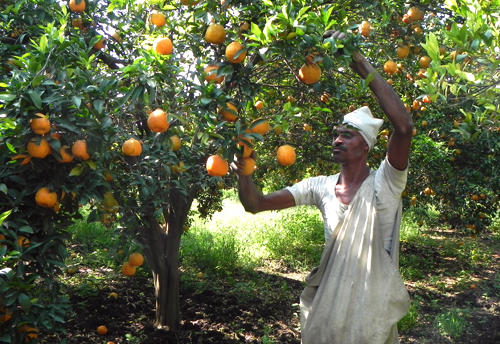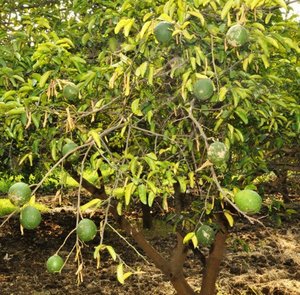Fighting disease and still delicious – a citrus story from India

A tale of how orchard growers in India used local citrus biodiversity to save the mandarin industry in the Amravati region.
Two short, crooked desolate-looking trees grow in the distant corner of an orchard. The trees bear neither attractive blossoms nor colourful fruits. In fact, if you attempt to taste one of their small dark green fruits, you are sure to clench your mouth with repulsion at its strongly acidic and acrid taste. So if not for taste or beauty, then why are these trees still kept in the orchard?
Meet Rangpur Lime (Citrus limonia) and Rough Lemon (Citrus jambhiri), two unattractive but cherished members of the Citrus family growing in the orange orchard-filled region of Amravati, in Maharashtra, India.
Indeed these trees have something that others do not – both of them possess an extraordinarily hardy root system, which enables the plant to withstand unfavourable soil conditions and resist foot rot disease. Locals call them the Akashaypatra (inexhaustible vessel) of authentic seeds for raising quality rootstock for the much-loved Nagpur Mandarin.
Nagpur mandarin, or Nagpur Santra, which is known for its sweet taste and for being high in demand both in local and foreign markets, also happens to be highly susceptible to Phytophtora rot. This fungus-like mold damages the already capricious root system of citrus trees that does not grow well in poor soil conditions.
So what can farmers who have grow Nagpur mandarins do? Rangpur Lime and Rough Lemon to the rescue!
In and around Amravati, farmers found out that they could join (graft) the young shoots of the sweet and tasty Nagpur mandarin, onto the hardy root systems of the Rangpur Lime and Rough Lemon to create a new, high yielding plant with both qualities.
This is how, many orchard owners have produced their own grafts since the 1980s, recall the elders in the Warud area of Amravati. The required material would be gathered from plants available in their orchards or through fellow orchard owners and local nurseries.
But as demand for already grafted Nagpur mandarins increased, commercial nurseries began to take advantage of orchard growers. Instead of using the roots of local Rangpur Lime and Rough Lemon, they used a mixture of citrus rootstock such as Galgal, which is neither recommended for Nagpur mandarins, nor resistant to Phytophthora. But as the saplings raised from Galgal would produce vigorous plants, nobody suspected until almost ten years later when trees started suffering from Phytophthora rot. The farmers had been duped. Many had to uproot their orchards to avoid further losses.
But the orchard owners didn't get deterred. As a means to counter the hoodwinking of commercial nurseries and to prevent the use of unauthentic and poor quality seeds, farmers began growing their own mother plants of Rangpur Lime and Rough Lemon to graft from. Those desolate-looking trees in the corner that have become the saviours of citrus farmers.
But this only offers a partial solution. Orchard owners need to ensure the quality of the scion material too, i.e. the young shoots of the Nagpur mandarin to implant onto the rootstock.
All orchard owners prune their trees to produce more flowers and flower buds so that more yields can be assured. But over time, this can reduce the number of quality vegetative buds that could be used for grafting.
The orchard owners realized that they needed to secure an assured source of authentic scion material. But this time they learned their lesson. Instead of relying on commercial nurseries they would depend on their own material. They started to select well-grown and healthy trees of Nagpur mandarin in their own orchards to act as the mother trees of scion material.
These two seemingly simple good practices: a) retention of mother trees of Rangpur Lime and Rough Lemon as a source of quality rootstock, and b) retention of healthy, mother trees of Nagpur mandarin as a source of quality scion buds, have had a profound effect on the longevity of these globally-important orange orchards of Amravati.
This story is part of a series to celebrate traditional knowledge, contributed by our national partner from the UNEP/GEF supported project 'Conservation and Sustainable Use of Cultivated and Wild Tropical Fruit Diversity: Promoting Sustainable Livelihoods, Food Security and Ecosystem Services', implemented in India, Indonesia, Malaysia and Thailand. In India, the project is coordinated regionally by Bioversity International in collaboration with Indian Council of Agricultural Research (ICAR), New Delhi.
Photo 1: Harvesting Nagpur mandarins, India. Credit: IIHR/Vinoth S.
Photo 2: Rough Lemon tree in an orchard. Credit: Somashekhar BS
